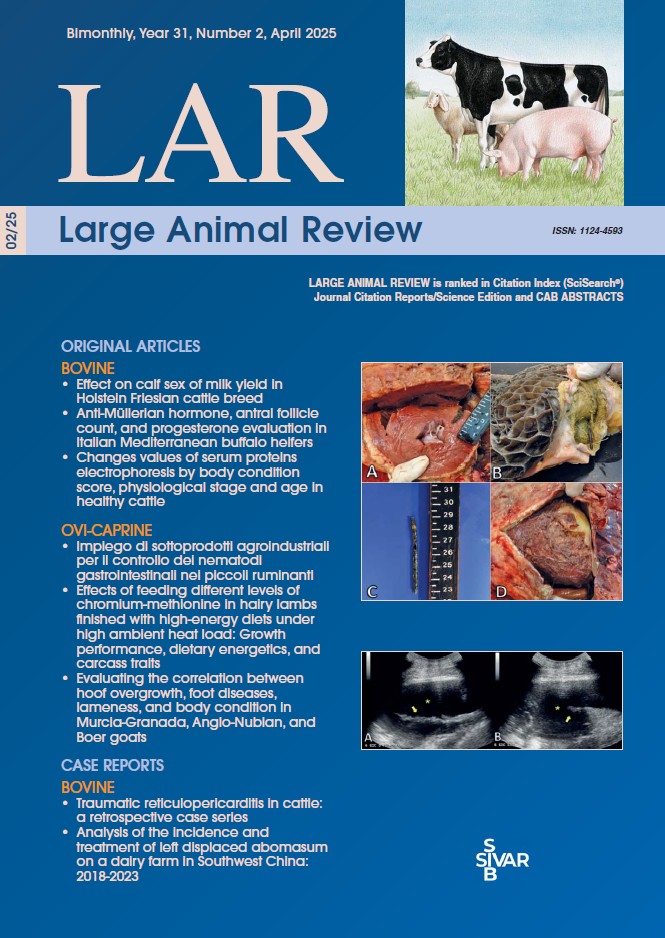The Changes values of Serum proteins electrophoresis by body condition score, physiological stage and age in healthy cattle
Abstract
TThe objective of the present study was to determine the influence of age, BCS (Body Condition Score) and physiological status to the electrophoresis of serum proteins in clinically healthy cattle. we studied 161 clinically healthy cattle. Blood samples were taken into jugular vein and analyzed for the values of serum protein fractions using agarose gel electrophoresis, in a semi-automatic system (HYDRASYS). an automated biochemical analyzer Cobas 6000 (ROCHE) are using to determine Total protein value. the standard value (Mean ± SD) has reported. The study obtained the same concentrations for albumin and globulins fractions with other works. the results marked shift in the values of some protein fractions, consequence of the studying parameters: The values of γ-, α1-globulins and Albumin in cattle were high significant with all categories of age (P< 0.001, P<0.01, P< 0.05 respectively). Also, the albumin/globulin ratio is of special interest for clinicians because the A/G ratio, is higher significant influence of age (P<0.0001). A high significant influence was found in the concentrations of α1-globulins with different stage of physiological status (P < 0.0001). Significant changes in relation to the stage of pre- or post -partum period was observed also in the concentrations of β-, γ-globulins, (P < .05, P<0.01 respectively). Then, a high significant relation between the A/G ratios and the physiological status (P < .0001). finely, only α1 globulins zone have a high significant with different grade of BCS (P < .001). In fact, of our results, we can better understand how age, BCS and physiological status interact to serum protein profiles in healthy cattle, pay particular attention to age when interpreting serum protein electrophoretic profiles. This knowledge is essential for optimizing nutritional strategies and health management practices on the farm and should be taken into consideration when interpreting the serum protein profile.


